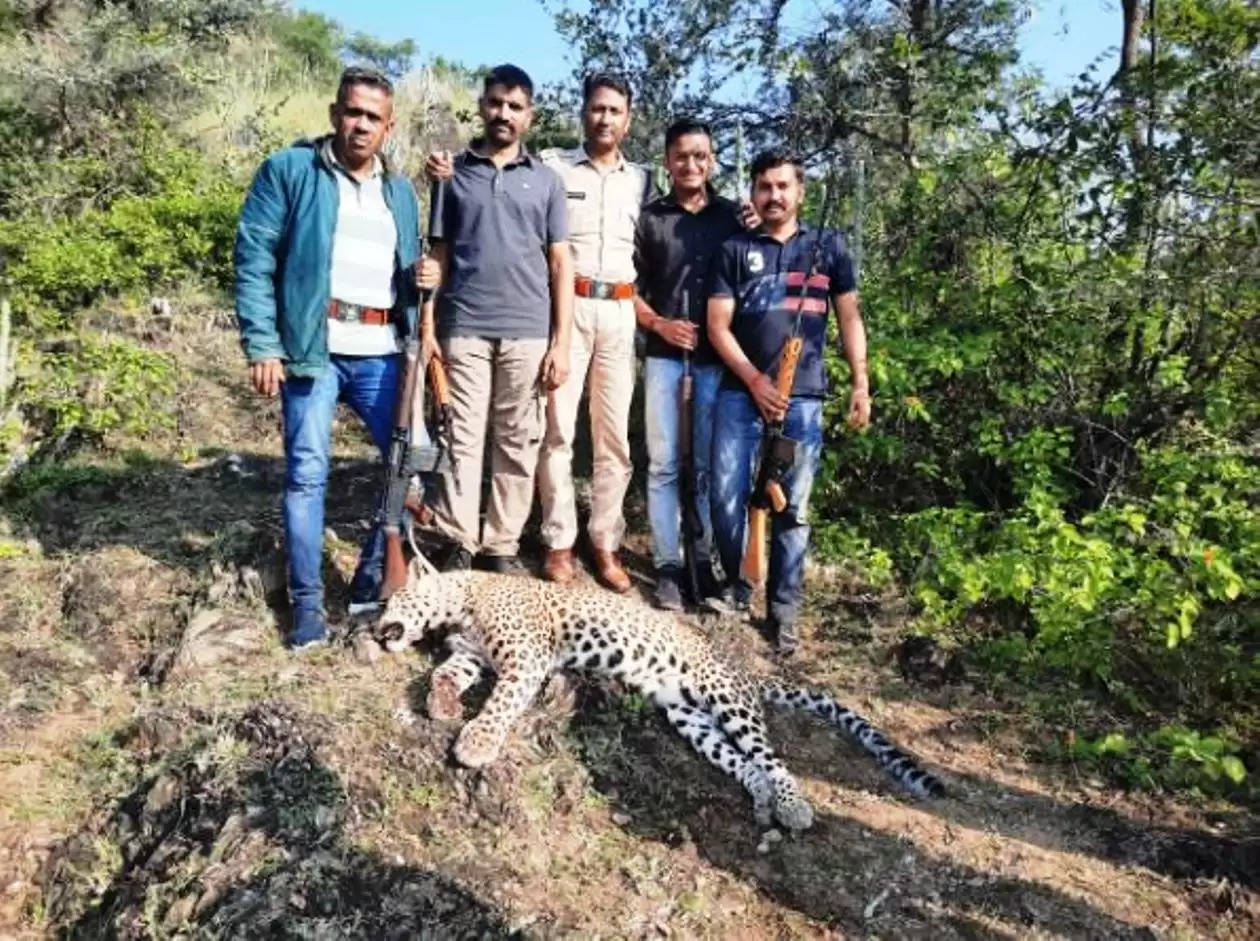Report Confirms Leopard Killed On Oct. 18 Was Gogunda Man-Eater
Wildlife Institute of India (WII) in Dehradun has released report confirming this based on testing of DNA samples taken from the killed leopard and victim Manga Bai which have matched
Udaipur, January 9, 2025 - The Wildlife Institute of India (WII) in Dehradun has released the report of the DNA samples taken from the man-eater leopard shot on October 18, 2024, and victim Manga Bai. The report confirms that the hair found on the body of the 65-year-old Manga Bai belong to the leopard that was shot dead by the Forest Department. This is the second report that has confirmed that the leopard killed was in fact the animal being searched for after it claimed several lives in Udaipur.
Earlier, the Forensic Laboratory in Jaipur, too, had confirmed the presence of human blood residues on the neutralised leopard's jaws.
Readers may recall the terror spread in Gogunda and Badgaon by the man-eater leopard in the last few months of 2024. Intense search operations were conducted by the Forest Department and local police, which included measures like setting up traps and recruiting Hyderabad sharpshooter Nawab Shafat Ali Khan. After several villagers lost their lives to leopard attacks, the Principal Chief Conservator of Forests and Chief Wildlife Warden, Pawan Kumar Upadhyay, issued an order that the man-eater be tracked down and rescued and shifted out of the region. Otherwise, if deemed necessary, be shot.
Finally, on October 18, the predator was shot dead on Madar hills, close to the site where two women had been attacked by a leopard just two days before. Of the two women was Madar-resident Manga Bai who later succumbed to her injuries.
Subsequently, the Forest Department sent five samples from the dead animal and also samples of the hair found on Manga Bai’s body to the WII to confirm the identity of the leopard killed.
Additionally, five leopards were also captured in traps set by the Forest Department. Of them, some were moved to Nahargarh Biological Park in Jaipur and rest kept at Sajjangarh Biological Park in Udaipur.
With Media Inputs
To join us on Facebook Click Here and Subscribe to UdaipurTimes Broadcast channels on GoogleNews | Telegram | Signal



